-
 Korea.net's 24-hour YouTube channel
Korea.net's 24-hour YouTube channel- NEWS FOCUS
- ABOUT KOREA
- EVENTS
- RESOURCES
- GOVERNMENT
- ABOUT US
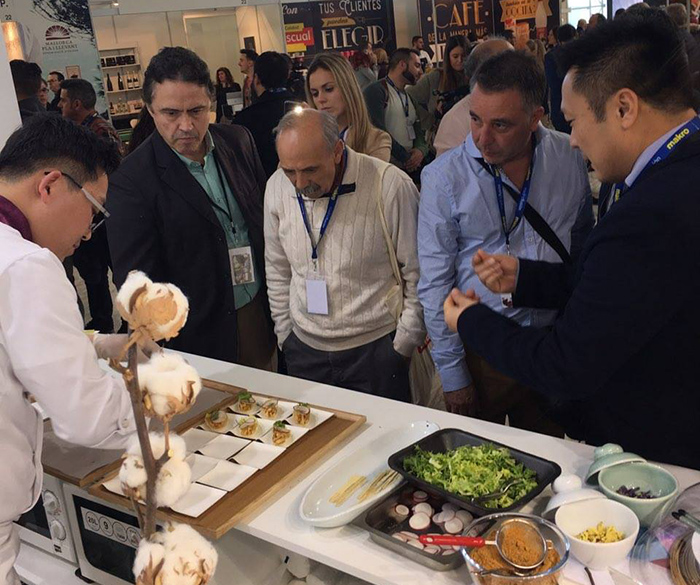
Visitors to the Madrid Fusion 2017 fair look closely at some of the Korean food being made with vegetables and doenjang soybean paste. The Korean Food Foundation introduced various dishes that use fermented condiments at the three-day world gourmet festival, which took place from Jan. 23 to 30.
A salad made with doenjang soybean paste.
Agar weed noodles made with a pine nut extract and a soy sauce broth.
These are just two of the delicious items featured at a promotional booth for Korean cuisine, or Hansik, at the Madrid Fusion 2017 fair, one of the world's top gourmet food festivals.
At the 14th Madrid Fusion, which took place from Jan. 23 to 25, the Korean Food Foundation and the Ministry of Agriculture, Food and Rural Affairs worked together to introduce new menu items that they jointly developed, under the theme of “Korean food, a rendezvous with fresh vegetables and fermented condiments.” The dishes all make use of fermented condiments, such as doenjang soybean paste or gochujang red pepper paste. This is now the fourth time for the Korean Food Foundation to participate in the gourmet food festival, where in previous years it has introduced seaweed varieties and Buddhist temple cuisine.
During this year’s three-day festival, the foundation introduced a series of dishes that use fermented condiments, such as a salad made with crispy vegetables, like cabbage and lettuce, which are mixed with doenjang soybean paste, or agar weed noodles made with a savory pine nut extract and a soy sauce broth, or cucumber-wrapped rice with seasonal herbs. Visitors to the booth were able to learn more about the food items and even sample some of them.
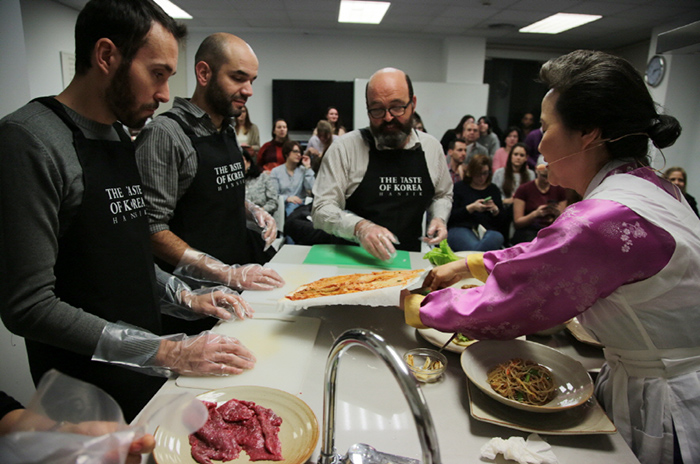
Participants learn directly from Korean Food Foundation President Yoon Sook-ja (right) during a cooking class at the Korean Cultural Center in Spain on Jan. 25.
During the festival, the Korean Food Foundation also introduced its list of “World’s 10 Favorite Korean Dishes” that were designed to be served at the PyeongChang 2018 Olympic and Paralympic Winter Games next year. The dishes were developed by taking into consideration the various tastes of people from around the world who will be visiting Korea next February for the Winter Olympics. In Madrid, visitors to the Korean food booth were able to learn more about the process of making fermented condiments thanks to the display of jars showing the ingredients at different stages of the fermentation process. They were also able to enjoy making healthy snacks, such as bugak (부각) deep-fried vegetables made from freshly harvested local produce, building an understanding about Korean cuisine.
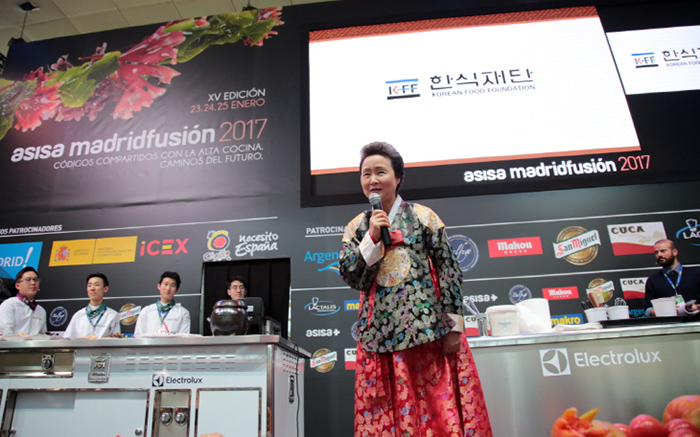
Korean Food Foundation President Yoon Sook-ja (center) said at the Madrid Fusion 2017 food fair on Jan. 25 that she will work hard to promote fermented foods and the Korean traditions associated with condiment preparation and fermentation.
Spanish media outlets didn't hide their interest in Korean food, either. Local broadcasters such as Tele Cinco and TVE gave major air time to the cooking class that took place at the Korean Cultural Center in Spain on Jan. 25. They focused on the value of fermented foods and of Korean cuisine, which includes a variety of fermented ingredients and condiments.
Korean Food Foundation President Yoon Sook-ja said during the event that, “I will do my best so that Korea’s traditions of ingredient preparation and fermentation can be enlisted as intangible cultural assets at UNESCO,” while mentioning the world’s growing interest in fermented food these days.
“Backed by the latest results of the cooking class that targeted Spanish people, we will also work hard to continue supporting the world’s interest in Korean food so that it can lead to them purchasing more Korean ingredients. To do so, we will not only expand opportunities to demonstrate and exhibit Korean food, but also offer more opportunities so that people can have first-hand cooking experiences,” she said.
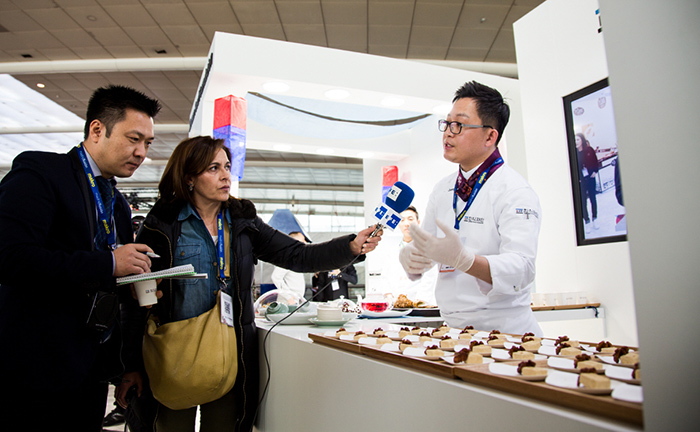
Spanish media outlet EFE interviews Korean chef Jeong Jae-deok as he demonstrates how to make the healthy traditional snack bugak on Jan. 23 in Spain.
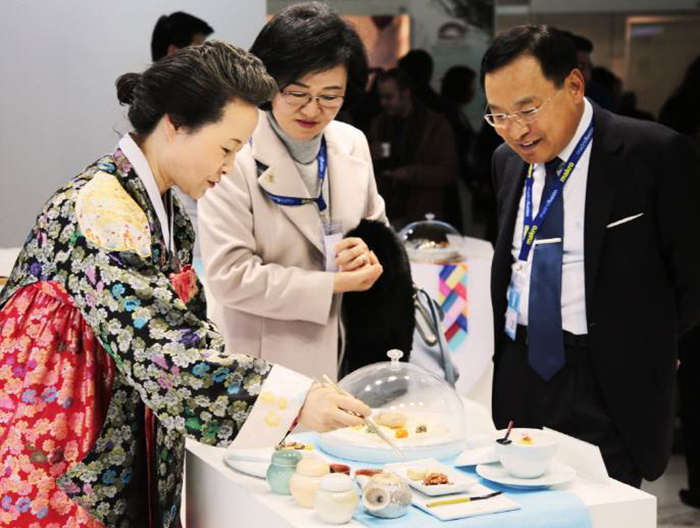
Korean Ambassador to Spain Park Hee-Kwon (right) listens to an explanation from Korean Food Foundation President Yoon Sook-ja about the food on display during a visit to the Korean food booth of the Madrid Fusion 2017 food fair.
By Yoon Sojung
Korea.net Staff Writer
Photos: Korean Food Foundation
arete@korea.kr
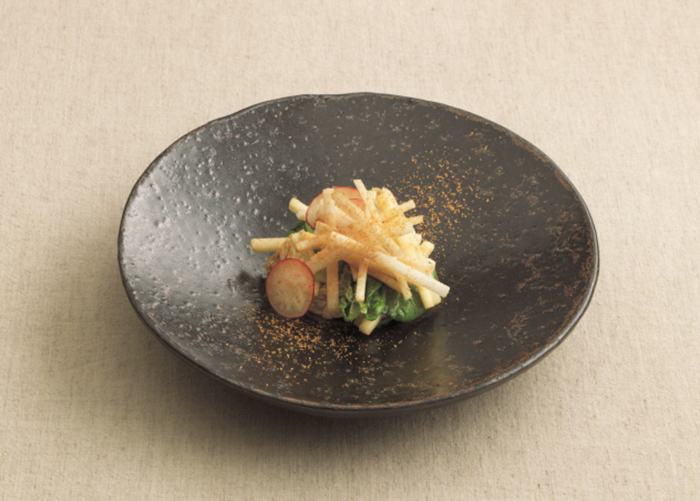
A salad is made with cabbage and lettuce mixed with doenjang soybean paste.
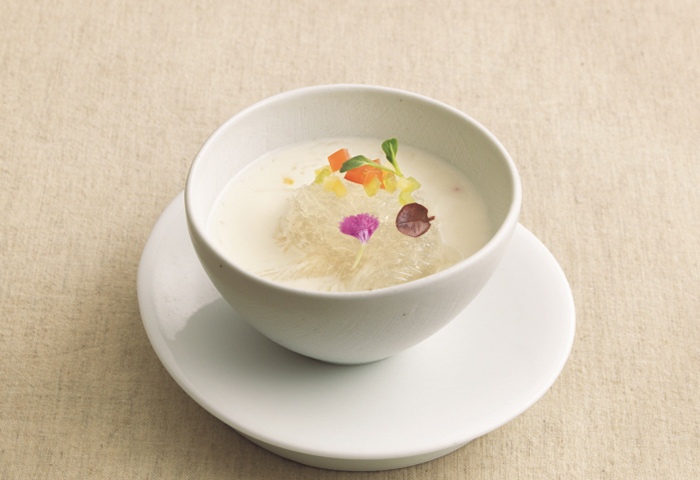
Agar weed noodles are made with a savory pine nut extract and a soy sauce broth.
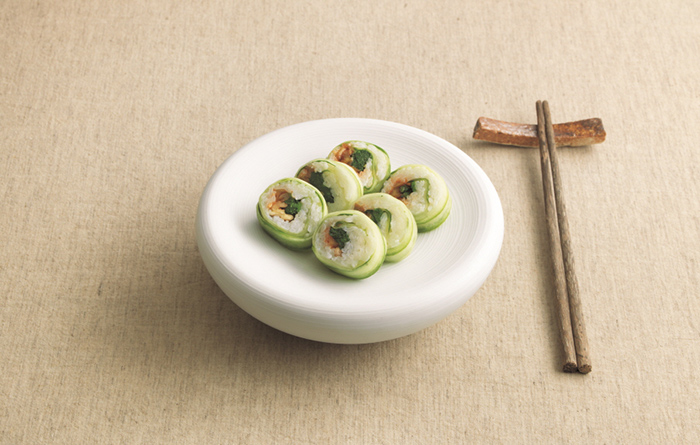
Cucumber-wrapped rice with seasonal herbs.
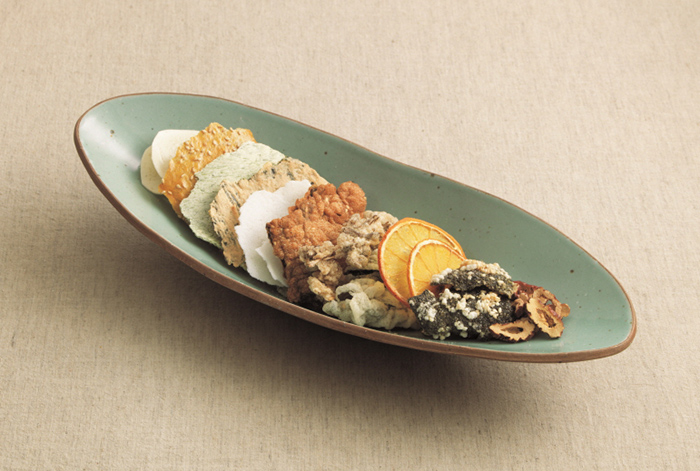
Bugak traditional snacks are made from deep-fried vegetables.
Most popular
- China warmly welcomes first Korea-born giant panda Fu Bao
- First hearing-impaired K-pop act hopes for 'barrier-free world'
- Novelist Hwang's 'Mater 2-10' shortlisted for Int'l Booker Prize
- Expats could account for 7% of population in 20 years: report
- Nat'l Fire Agency picks 137 elite staff for deployment abroad













